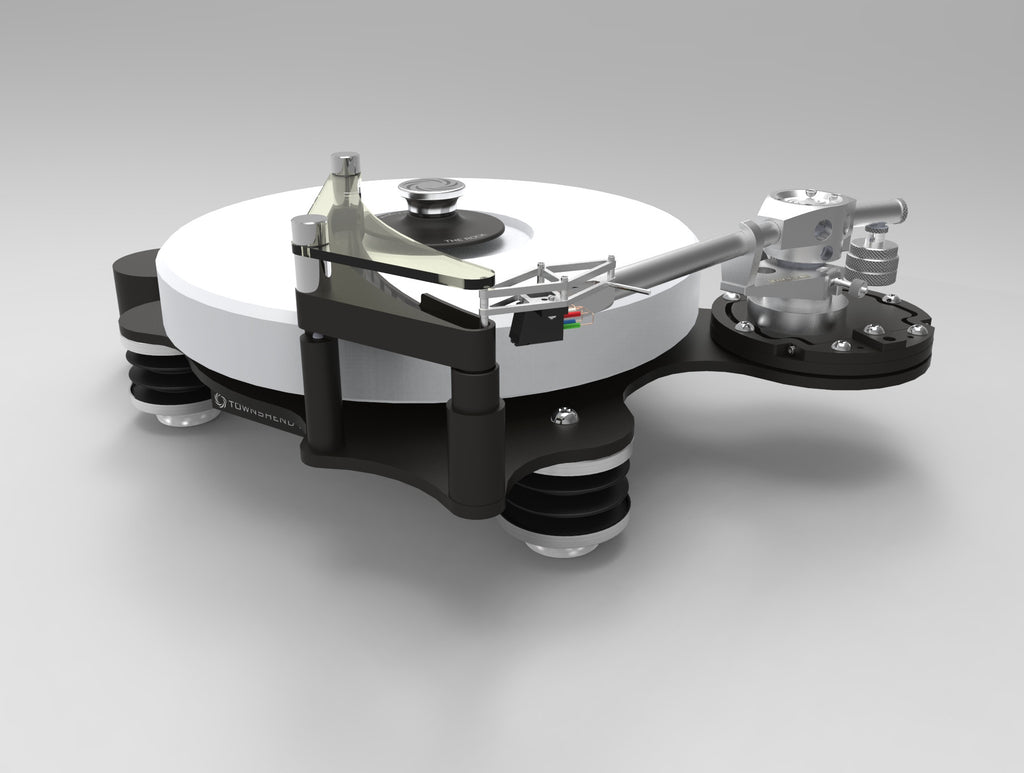THE ROCK 7
Panoramica prodotto
The Rock 7 is an open frame, two speed, belt drive turntable mounted on three Seismic Load Cells™. It is the latest evolution of Townshend Audio’s legendary Rock turntables, so named because of the solidity of the bass they can deliver. This is a result of the unique front end damping trough which greatly diminishes vibration in the arm and cartridge and results in the cleanest sound available with vinyl.
The Rock 7 is built around an extremely stiff subchassis that supports the platter bearing, levelling counterweight and damping trough. The motor is free-standing to maximise isolation and has a two-speed drive pulley for 33/45rpm.
The platter bearing is a one-piece steel shaft with a tungsten-carbon steel thrust pad which rests on a precision steel ball. This sits in the bottom of a brass bearing-journal which is fixed to the main chassis. The bearing shaft extends right through the sub- and main platter, emerging at the top to form the centre spindle.
The platter is machined from high density polyethylene (HDPE) that was chosen for its virtually identical physical properties to the vinyl LP. This sits on a precision machined aluminium sub-platter.
The turntable is supported on our spring bellows isolation feet, the forerunner of the Seismic Load Cell™, these provide the ideal suspension for the Rock 7 and make it immune to external vibration.
Front end damping
The front end damping trough contains viscous silicone fluid which works in combination with a small paddle that’s clamped between the headshell and cartridge. The paddle sits in the damping fluid as the cartridge traces the record.
The fluid allows the cartridge and paddle to move without resistance as it follows the groove up and down and across the record. At 10Hz where the combination of stylus, cartridge and tonearm has a natural resonance, the fluid significantly damps any movement. Killing vibration in the arm and cartridge in this way means that the signal picked up by the stylus is far cleaner than in other turntables.
Damping low frequency movement has the benefit of reducing non-linearity in the replay chain because the phono stage is no longer trying to amplify subsonic sounds produced by warps, which usually result in pumping bass cones.
Optional extra Just as it’s much easier to walk in deep water than it is to run the fluid allows the paddle to move at slow speeds but resists higher speed or frequency movement.
The effect of front end damping
- Vendor: Townshend Audio
- Type: Giradischi



